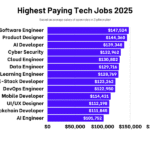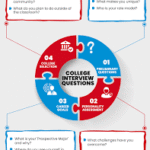Think back to what a typical classroom looked like just 10 years ago chalkboards, paper textbooks, and maybe a projector. Fast forward to today, and you’ll find students using tablets, joining virtual field trips, and getting help from AI-powered tutors. Welcome to the modern American classroom.
Whether you’re a student, parent, or educator, it’s clear: technology is transforming education in real time. Let’s take a look at the top tech trends shaping how learning happens across the US.
1. Smart Devices Are the New Notebooks

From iPads to Chromebooks, smart devices are now everyday tools in schools. Students can read e-books, complete assignments, and interact with lessons using touchscreens instead of pens and paper.
Common tools in use:
- iPads for interactive lessons and digital notes
- Google Classroom for managing homework
- Smartboards for group learning and visual presentations
These tools aren’t just cool they help students learn at their own pace, while giving teachers better ways to track progress.
2. Learning in the Cloud
Forget the heavy backpacks and lost papers. Cloud-based platforms like Google Workspace, Microsoft Teams, and Canvas have made it super easy for students to access everything they need—assignments, notes, videos, and even quizzes from anywhere.
Why it works:
- All data is kept online and updated instantly.
- Teachers and students can maintain communication outside of the classroom.
- Learning continues smoothly during sick days or school closures
After the pandemic, cloud tools became essential and now they’re here to stay.
3. AI Is Becoming a Learning Partner
Artificial Intelligence might sound high-tech, but it’s already helping students in practical ways. Whether it’s a math app that adjusts to your level or a chatbot that answers questions late at night, AI is making learning more personalized.
How AI is being used:
- Smart tutors that adapt to their pupils’ strengths and weaknesses
- Chatbots for quick answers or reminders
- Data tools that assist educators in identifying students who may want more support
The goal? To make education more supportive, not robotic.
4. Learning Through Games
Let’s face it students today are digital natives. So why not use games to teach? Gamified learning is a big trend, where lessons are turned into challenges, points, and rewards. It’s fun—and effective.
Popular classroom apps:
- Kahoot! for quiz competitions
- Duolingo for language learning
- Prodigy for practicing math
- Minecraft: Education Edition for creativity and problem-solving
These apps keep students engaged while reinforcing skills in a way that feels like play, not pressure.
5. VR & AR Are Making Learning Real
Imagine walking through the pyramids of Egypt or exploring the human heart in 3D—all from your desk. With Virtual Reality (VR) and Augmented Reality (AR), that’s now possible.
Why schools love it:
- Makes tough topics easier to understand
- Gives students a hands-on, immersive experience
- Encourages curiosity and deep learning
More US classrooms are adopting VR headsets and AR apps for science labs, history lessons, and beyond.
6. Coding & STEM Are the New Basics
In today’s tech-driven world, STEM education (Science, Technology, Engineering, and Math) is more than just a trend; it’s a necessity. Schools are introducing students to coding, robotics, and problem-solving at younger ages.
Cool things students are doing:
- Writing simple code on platforms like Scratch
- Building robots from LEGO kits
- Designing 3D models and printing them
- Solving real-world problems through group projects
With tools like Code.org and Tynker, even beginners can get started easily.
7. Digital Safety & Online Responsibility Matter More Than Ever
As classrooms become more connected, it’s just as important to teach students how to be safe and respectful online. That’s where digital citizenship programs come in.
What students are learning:
- How to avoid cyberbullying
- How to protect personal data
- The definition of a digital footprint and its significance
- Why kindness online is just as important as in person
Schools want students to not just use technology but to use it wisely.
Final Thoughts: The Future Is Already Here
Technology in US classrooms isn’t just a fancy upgrade; it’s changing how students learn and how teachers teach. Education is becoming more flexible, individualized, and grounded in reality as a result.
Of course, technology isn’t everything. Great teachers, curious minds, and supportive communities still make all the difference. But with smart use of tech, the future of learning looks more exciting and more accessible than ever before.










